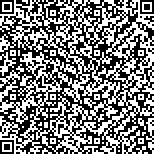殷小平,李超,周保健,倪宏.运动训练对发育期惊厥性脑损伤大鼠搜寻策略及大脑皮质可塑性相关分子-1表达的影响[J].中华物理医学与康复杂志,2017,39(7):486-491
扫码阅读全文

|
| 运动训练对发育期惊厥性脑损伤大鼠搜寻策略及大脑皮质可塑性相关分子-1表达的影响 |
| Effects of physical exercise on seizure-induced cognitive deficits |
| |
| DOI: |
| 中文关键词: 惊厥 运动训练 发育 可塑性相关分子 认知 |
| 英文关键词: Seizures Exercise Plasticity-related genes Cognition |
| 基金项目:国家自然科学基金(81471337);江苏省卫生厅重点人才资助 |
|
| 摘要点击次数: 5470 |
| 全文下载次数: 6186 |
| 中文摘要: |
| 目的 将发育期大鼠制成青霉素诱发反复惊厥模型,探讨运动训练对实验大鼠水迷宫搜寻策略和脑皮质可塑性相关分子PRG-1表达的远期影响。 方法 采用随机数字表法将出生21d(P21)的SD大鼠分为空白对照组、训练对照组、单纯惊厥组及惊厥训练组。采用青霉素腹腔注射将单纯惊厥组及惊厥训练组大鼠制成反复惊厥动物模型;空白对照组、训练对照组则给予等量生理盐水腹腔注射。各组大鼠分别于P39~P43、P61~P64期间进行Morris水迷宫策略分析,检测大鼠学习及记忆功能。P49~P54期间训练对照组及惊厥训练组大鼠给予踏转轮训练,每天训练1次,每次训练30min,连续训练6d。待Morris水迷宫测试结束后(P66)采用荧光定量RT-PCR法观察各组大鼠可塑性相关基因-1(PRG-1)在大脑皮质中的表达。 结果 ①搜寻策略:各组大鼠边缘式搜寻比例均呈逐渐减少趋势,而趋向式和直线式搜寻比例均呈逐渐增加趋势。Ridit秩和检验显示第1次Morris水迷宫实验两惊厥组第2天及第4天成绩均明显落后于两对照组(P<0.05);第2次水迷宫实验发现惊厥训练组第2天以后成绩明显提高,第4天时训练对照组及惊厥训练组成绩均明显优于单纯惊厥组(P<0.05)。②记忆实验:对各组大鼠搜寻策略进行Ridit秩和检验,发现第1次水迷宫测试两惊厥组成绩均明显落后于两对照组(P<0.05);第2次水迷宫测试单纯惊厥组搜寻策略明显落后于其它组(P<0.05),而惊厥训练组成绩显著提高,与训练对照组无显著差异。③RT-PCR:训练对照组、单纯惊厥组、惊厥训练组PRG-1表达均明显高于空白对照组(P<0.05);此外惊厥训练组PRG-1表达较单纯惊厥组有降低趋势,但差异无统计学意义(P>0.05)。 结论 运动训练能显著改善发育期反复长程惊厥所致认知损伤,其治疗机制可能与调节脑皮质PRG-1表达有关。 |
| 英文摘要: |
| Objective To explore the long-term effects of physical exercise on learning, memory and the expression of plasticity-related gene-1 (PRG-1) in the cerebral cortex of rats with penicillin-induced developmental seizures. Methods Twenty-four 21-day Sprague-Dawley rats were randomly divided into a control group (CONT1), an exercised control group (CONT2), a seizure group (EXP1) and a seizure plus exercises group (EXP2), each of 6 using a random number table. Penicillin was injected intraperitoneally to the rats in the EXP1 and EXP2 groups to induce seizures, while those in the CONT1 and CONT2 groups received saline injections. Morris water-maze tests were performed to evaluate spatial learning and memory capacity. The rats in the CONT2 and EXP2 groups were administered an aerobic exercise program 30 min per day for 6 consecutive days. The other groups were maintained on the treadmill for the same time but without exercising. Real-time polymerase chain reactions were used to quantify the expression of PRG-1 mRNA in the cerebral cortex. Results There was a decreasing trend in marginal searching and increasing taxis and linear searching in all four groups. Ridit analysis showed that in the water-maze tests on days 2 and 4 the average scores of the control groups were significantly higher than those of the EXP1 and EXP2 groups. However, significant increases in the average scores were observed in the maze tests of the EXP1 group after day 2 and with the EXP2 group from day 4 on. The average scores of the control group were significantly lower than those of the other 3 groups. In the first maze test, the average memory scores of the two seizure groups were significantly lower than those of the controls. In the second maze test, however, only the EXP1 group′s average score was significantly worse than those of the other groups. That of the EXP2 group had improved significantly, and was not significantly different from that of the CONT2 group. The expression of PRG-1 was much higher in the CONT2, EXP1 and EXP2 groups than in the CONT1 group. The average expression of PRG-1 in the EXP2 group was not significantly different from that in the EXP1 group. Conclusions Physical exercise can significantly relieve the cognitive deficits induced by long-term seizures, which may be associated with the regulation of PRG-1 expression in the cerebral cortex. |
|
查看全文
查看/发表评论 下载PDF阅读器 |
| 关闭 |